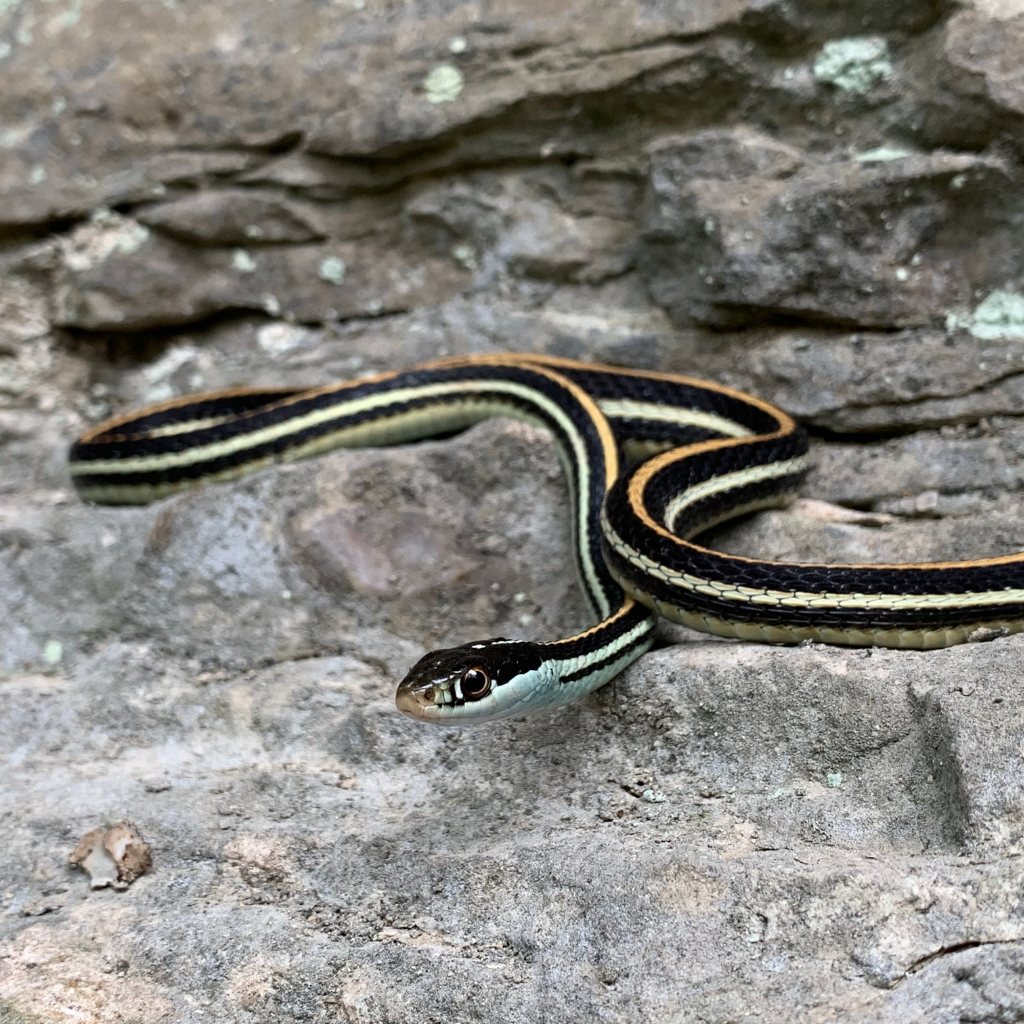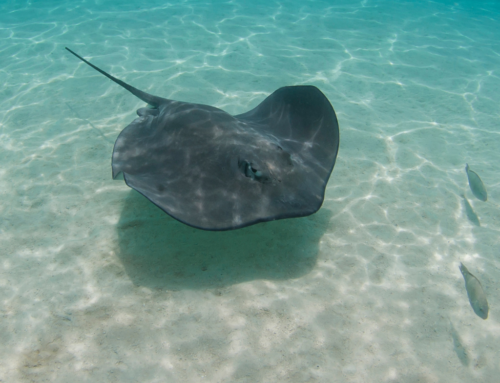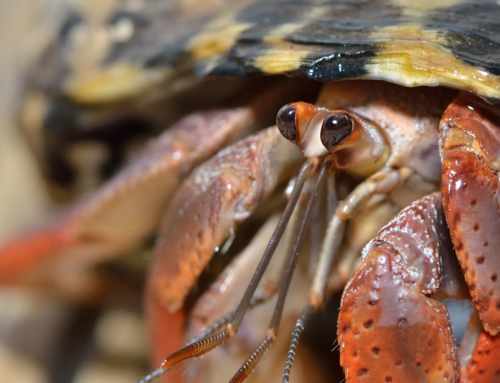While visiting my home town of Evansville, Indiana, I had a sudden realization: Snake Road is nearby! I had learned about this reptile wonderland from my husband, who is a massive herpetology enthusiast. We quickly made plans to drive the three hours to Snake Road, Illinois.
What is Snake Road?
If you’ve never heard of Snake Road, you’re not alone. I lived a few hours from it for 18 years and never heard of it!
Snake Road is a nickname given to a particular road in the Shawnee National Forest in Southern Illinois. Twice a year, this road is shut down to cars because dozens of reptile and amphibian species migrate across it. This makes finding snakes, frogs, and other typically shy wildlife species abundant and incredibly easy to find. The road is closed for migration season from March 15 to May 15, and again from September 1 to October 30. This is the best time to visit!
The actual name of the road is LaRue road, located in LaRue Illinois. The town itself is very sparse, but you can definitely make a weekend of it by camping in the stunning Shawnee National Forest!
Tip: When using a GPS, make sure you DON’T type in “Snake Road”. It will take you to a completely wrong destination!
What Kind of Snakes Are on Snake Road?
When I visited in early October, we mostly saw Cottonmouths. However, depending on when you visit, you may see thirteen different species of snakes! Three of these species are venomous: Cottonmouths, Copperheads, and Timber Rattlesnakes. However, these snakes aren’t “aggressive”, meaning if you keep your distance, you’ll be safe.

A stunning ribbon snake found crawling on the limestone bluffs at Snake Road, Illinois
There are also various species of frogs, fish, skinks, and turtles that you may see, along with common woodland creatures such as squirrels, rabbits, and the occasional deer. Depending on the time of year, you may also see various migrating birds.
Why Do Snakes Migrate Across Snake Road, Illinois?
Snake Road is located in a very unique place, dividing two extremely different ecosystems. On one side is a swampy wetland, on the other side are dry limestone bluffs. Since reptiles and amphibians are cold-blooded, they need to migrate to the different ecosystems in order to maintain their temperatures, lay eggs (or give live birth!), and breed.
Both sides of the road are stunning! Even if I had not seen a single snake all day, admiring the swamps and towering limestone cliffs would have been worth the trip!

The swamp along Snake Road’s path with limestone bluffs behind
Due to such large numbers of wildlife crossing this road, it is completely closed off to vehicles of any kind from March 15th to May 15th, and again from September 1st to October 30th.

Is It Safe To Visit?
Absolutely. Snakes get a bad reputation for being dangerous and aggressive creatures. However, they will only attack when directly bothered, and it often takes quite a bit to upset them. I found myself completely surrounded by dozens of Cottonmouths after stepping off the trail and felt completely safe. Just watch where you step!

A Cottonmouth snake, well camouflaged in the leaves along Snake Road
The safest place to stay if you are not an experienced hiker or seeing snakes in the forest brush is the road itself. You won’t see as much wildlife there, but you’ll still see some! You will also meet other wildlife lovers from all over the country who make the trip to Snake Road each year. Snake people are friendly people, and they will definitely help you spot some wildlife! The road itself is 2.5 miles (4km) long and fairly easy to walk. However, I highly suggest wearing thick, ankle-high hiking boots and long hiking pants when visiting. Snakes can still bite through leather, but those added thick layers will give you more protection than shorts and sneakers. A snake will only bite when they feel threatened, and this usually happens by accidentally stepping on them. If you haven’t been “herping” before, I’d recommend staying on the path. These snakes have some serious camouflage, and you don’t want to step on them!
I also suggest bringing a camera with a good zoom or a selfie stick to get good photos without getting too close.

A young Cottonmouth neonate along Snake Road
How to Find Snakes
If you’re the adventurous type, you’ll definitely want to search around for snakes. The best way to find them is off the main road where they can hide. Snakes love to curl up under rocks and crawl up the limestone faces, so that’s the best place to look! We found the most poking their noses out from under rocks, crawling up the limestone bluffs, and swimming in the water.
Remember:
- A snake is only truly dangerous when you are within striking distance. If you follow the “6 feet” rule, you’ll be safe. Snakes won’t chase you!
- Watch where you step, and wear thick hiking boots.
- It is highly illegal to capture, handle, or remove snakes from the area. Look, don’t touch!
Where to Stay Near Snake Road
LaRue, Illinois is an extremely small town. If you love the outdoors, the best thing to do is camp in nearby Pine Hills. I have not camped here, but I have read that it is fairly primitive without much to offer other than a place to legally pitch a tent. You can also find small hotels and motels in the nearby towns, but nothing fancy. Your best bet is staying somewhere near Wolf Lake, about a fifteen-minute drive from Snake Road.
The Importance of Snakes
I have a huge soft spot for snakes. They are vilified for no reason, and they’re incredibly important for the environment! Snakes help control rodent populations which also controls the spread of disease to humans. They are also an important food source for many birds that would not survive without them! With modern medicine, you have little to worry about, even with the few venomous snakes you may come across in the United States. Non-venomous snakes are little to no risk to humans or their pets!

A rough green snake found next to Snake Road’s trail
I hope after reading this, snakes become a little less scary. They are just as important, fascinating, and beautiful as elephants in Thailand, Lions in Africa, and monkeys in central and South America. We should love reptiles as much as we love mammals!
Are you ready to visit Snake Road? Let me know what you think about this unique destination!
Shop My Hiking Faves
Like this article? Pin it!


















Leave a Reply